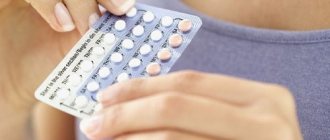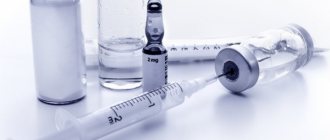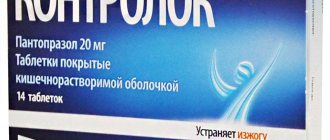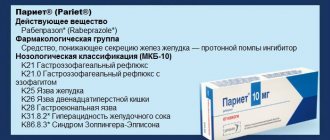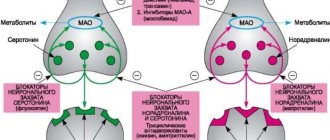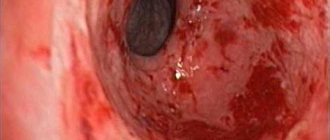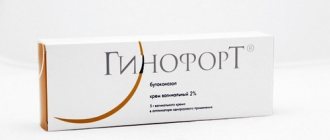Bivalos®
- Russian
- Kazakh
Bivalos
Dosage form
Granules for preparation of suspension for oral administration 2 g
Compound
1 sachet contains
active substance – strontium ranelate 2.632 g, equivalent to anhydrous strontium ranelate 2 g,
excipients: aspartame (E951), mannitol (E421), maltodextrin.
Description
Yellow powder. The prepared suspension is a cloudy, pale yellow solution.
Pharmacotherapeutic group
Drugs for the treatment of bone diseases. Other drugs that affect bone structure and mineralization. Strontium ranelate
ATX code М05ВХ03
Pharmacological properties
Pharmacokinetics
Strontium ranelate consists of 2 atoms of stable strontium and 1 molecule of ranelic acid, this organic component allows the best compromise in terms of molecular weight, pharmacokinetics and tolerability of the drug.
The pharmacokinetics of strontium and ranelic acid have been studied in healthy young men and healthy postmenopausal women, as well as during long-term use for osteoporosis in men and postmenopausal women, including elderly women. Due to the high polarity of ranelic acid, its absorption, distribution and binding to plasma proteins are low.
Ranelic acid does not accumulate and does not exhibit metabolic activity. Absorbed ranelic acid, unchanged, is rapidly excreted by the kidneys.
Absorption
Following a 2 g oral dose, the absolute bioavailability of strontium is approximately 25% (range 19% to 27%). Maximum plasma concentration (Cmax) is achieved after 3-5 hours. Stable drug concentrations in plasma are achieved after 2 weeks of treatment.
Concomitant use of strontium ranelate with calcium or food reduces the bioavailability of strontium by approximately 60-70% compared with that when taking the drug 3 hours after a meal. Given the relatively slow absorption of strontium, food or calcium intake should be avoided both before and after taking Bivalos.
Supplemental oral vitamin D does not alter strontium exposure.
Distribution
The approximate volume of distribution of strontium is 1 l/kg. The binding of strontium to plasma proteins is low (25%), strontium has a high affinity for bone tissue.
Measurements of strontium concentrations in iliac crest bone biopsies obtained from patients treated with strontium ranelate 2 g per day for up to 60 months indicate that bone strontium concentrations may reach a plateau after approximately 3 years of treatment.
There are no data on the kinetics of strontium from bone outside of therapy.
Biotransformation
Strontium is a divalent cation and is therefore not subject to metabolism. Strontium ranelate does not inhibit cytochrome P450 enzymes.
Removal
Strontium excretion depends on time and dose. The effective half-life is approximately 60 hours. Strontium is excreted through the kidneys and gastrointestinal tract. Plasma clearance of strontium is approximately 12 ml/min (CV 22%), and renal clearance is approximately 7 ml/min (CV 28%).
Pharmacokinetics in special clinical situations
Elderly patients
Population pharmacokinetic data did not reveal an association between age and apparent clearance in the target population.
Patients with kidney failure
In patients with mild to moderate renal impairment (creatinine clearance 30-70 ml/min), strontium clearance decreases simultaneously with creatinine clearance (approximately 30% decrease within creatinine clearance 30-70 ml/min), and therefore leads to to an increase in plasma strontium levels. In phase III studies, at enrollment, 85% of patients had creatinine clearance between 30 and 70 mL/min, and 6% had less than 30 mL/min, with an average creatinine clearance of 50 mL/min.
No dose adjustment is required in patients with mild or moderate renal impairment.
There are no data on the pharmacokinetics of the drug in patients with severe renal failure (creatinine clearance below 30 ml/min).
Patients with liver failure
There are no data on the pharmacokinetics of the drug in patients with liver failure. Taking into account the pharmacokinetic parameters of strontium, dose adjustment is not required in this category of patients.
Children and teenagers
There are no data on the effectiveness and safety of strontium ranelate, so use of the drug by persons in these age groups is not recommended.
Pharmacodynamics
In vitro strontium ranelate:
- stimulates bone formation in the structure of bone tissue, as well as the replication of osteoblast precursors and collagen synthesis in bone cell culture;
- reduces bone resorption by reducing osteoclast differentiation and resorption activity.
As a result, bone metabolism is rebuilt in favor of bone formation.
The entry of strontium into bone tissue occurs mainly due to adsorption on the surface of the bone crystal; strontium only to a small extent replaces calcium in the apatite crystal in the newly formed bone. Strontium ranelate does not change the characteristics of bone tissue.
The combined effect of the distribution of strontium in bone and the increased radiation absorption of strontium relative to calcium leads to increased measurements of bone mineral density (BMD) by dual-energy x-ray absorptiometry.
Available data indicate that the measured change in BMD over 3 years of treatment with Bivalos® at a dose of 2 g per day is due to 50% of these factors. This feature should be taken into account when interpreting changes in BMD during treatment with the drug.
In phase III studies that demonstrated the drug's effectiveness in preventing fractures, measured mean BMD with Bivalos® increased from baseline by approximately 4% per year in the lumbar spine and by 2% per year in the femoral neck. . Thus, over 3 years, BMD increased by 13-15% and 5-6%, respectively, depending on the study.
It was found that when using strontium ranelate, starting from the third month of treatment and for 3 years, there was an increase in biochemical markers of bone formation (specific bone alkaline phosphatase and carboxy-terminal propeptide of type I procollagen), as well as a decrease in biochemical markers of bone resorption (interconnected C-telopeptides in serum and N-telopeptides in urine).
In addition to the pharmacological effect of strontium ranelate, there was a slight decrease in serum calcium and parathyroid hormone concentrations, an increase in phosphorus concentrations and total alkaline phosphatase activity without clinical consequences.
Clinical effectiveness
Treatment of postmenopausal osteoporosis
The research program for the drug's effectiveness in preventing bone fractures consisted of two placebo-controlled studies: SOTI and TROPOS.
The SOTI study included 1649 postmenopausal women with an established diagnosis of osteoporosis (low BMD of the lumbar spine and a history of fractures in more than half of the women); the average age of the study participants was 70 years.
The TROPOS study included 5091 postmenopausal women with an established diagnosis of osteoporosis (with low femoral neck BMD and a history of fractures in more than half of the women); the average age of the study participants was 77 years.
Both studies included 1556 patients over 80 years of age at enrollment (representing 23.1% of the study population). In addition to strontium ranelate 2 g/day or placebo, patients took calcium and vitamin D supplements throughout the study period.
Taking Bivalos® reduced the relative risk of developing new cases of vertebral fractures over 3 years by 41% (SOTI study). The effect was statistically significant starting from the 1st year of the study. Similar benefits were demonstrated in women with multiple fractures before the start of the study.
The relative risk of symptomatic vertebral fractures (defined as fractures accompanied by back pain and/or a decrease in height of at least 1 cm) decreased by 38%. The use of Bivalos was also associated with a reduction in the number of cases of height loss of at least 1 cm.
The results of studying the quality of life using a special QUALIOST scale, as well as a scoring scale of general well-being based on the general scale of the SF-36 questionnaire, demonstrated the benefits of the drug.
The effectiveness of the drug in reducing the risk of developing new cases of vertebral fractures was confirmed in the TROPOS study, including in patients with osteoporosis who did not have fractures before treatment.
Analysis of pooled data from the SOTI and TROPOS studies showed that in patients over 80 years of age at study entry, Bivalos® reduced the relative risk of developing new vertebral fractures by 32% over the 3-year study period.
Among patients without a history of fractures, but with at least one additional risk factor for fractures, in whom pre-treatment BMD values of the lumbar spine and/or femoral neck were in the range characteristic of osteopenia, the use of Bivalos® over 3 years of treatment reduced the risk of developing a first vertebral fracture is 72%.
Following the TROPOS study, data were analyzed in the subgroup of patients aged over 74 years at high risk of fracture—femoral neck BMD T-score ≤ –3 SD (the range used in the study was NHANES III –2.4 SD). In this group (n=1977, i.e. 40% of patients who took part in the TROPOS study), Bivalos® reduced the risk of hip fractures by 36% over 3 years of treatment.
Indications for use
Treatment of severe osteoporosis:
– in postmenopausal women,
– in adult men,
with a high risk of fractures, for which the use of other drugs approved for the treatment of osteoporosis is impossible, for example, due to the presence of contraindications or intolerance. In postmenopausal women, strontium ranelate reduces the risk of spinal and hip fractures.
The decision to prescribe strontium ranelate should be based on an assessment of the overall risk in the individual patient.
Directions for use and doses
Treatment is prescribed by a doctor experienced in treating osteoporosis.
The recommended dose is 1 sachet (2 g), once daily, orally.
Absorption of strontium ranelate is reduced by food, milk and derivative products, so it is recommended to take BIVALOS between meals.
Given the slow absorption, it is recommended to take the drug before bedtime, preferably no earlier than 2 hours after meals.
Before use, the granules are dissolved in at least 30 ml of water (approximately 1/3 of a regular glass). Although studies have confirmed the stability of the drug in suspension for 24 hours, the suspension should be taken immediately after preparation.
Given the nature of the disease, strontium ranelate is intended for long-term use.
Patients taking strontium ranelate should take vitamin D and calcium supplements unless their dietary intake is adequate.
The effectiveness and safety of strontium ranelate have been demonstrated in adult men and postmenopausal women with osteoporosis across a wide age spectrum (up to and including 100 years).
Elderly patients do not require dose adjustment.
Dose adjustment is not required in patients with mild or moderate renal failure (creatinine clearance 30-70 ml/min). In patients with severe renal failure (creatinine clearance less than 30 ml/min), Bivalos is not recommended.
In patients with impaired liver function, no dose adjustment is required.
Side effects
The safety of the drug during long-term use was assessed in postmenopausal women with osteoporosis receiving strontium ranelate at a dose of 2 g/day for 60 months during phase III clinical trials. The studies involved approximately 8,000 patients. The mean age at study entry was 75 years, and 23% of patients included in the study were aged 80–100 years.
The most commonly reported side effects were nausea and diarrhea, usually at the beginning of treatment. Discontinuation of therapy was mainly due to nausea.
There were no differences in the nature of adverse events, regardless of whether patients were under or over 80 years of age at study entry.
The following adverse reactions have been reported during clinical and/or post-marketing studies with strontium ranelate. Adverse reactions are presented by frequency: very often (>1/10); often (>1/100 and 1/1000 and 1/10,000 and
Source: //drugs.medelement.com/drug/%D0%B1%D0%B8%D0%B2%D0%B0%D0%BB%D0%BE%D1%81-%D0%B8%D0%BD% D1%81%D1%82%D1%80%D1%83%D0%BA%D1%86%D0%B8%D1%8F/798572871477650965?instruction_lang=RU
Side effects
Adverse reactions recorded during clinical studies, the connection of which with the use of Bivalos, at least cannot be excluded:
- cardiovascular system: often - myocardial infarction [in the presence of postmenopausal osteoporosis in patients taking strontium ranelate (n=3803) when compared with placebo (n=3769) according to pooled data from randomized placebo-controlled trials];
- circulatory system: often – venous thromboembolism;
- nervous system: often - impaired consciousness, headache, memory loss; infrequently – convulsions;
- skin and subcutaneous tissues: often – eczema, dermatitis; rarely – DRESS syndrome (drug-induced hypersensitivity syndrome with eosinophilia); extremely rarely - severe hypersensitivity reactions (including toxic epidermal necrolysis, Stevens-Johnson syndrome);
- digestive tract: often – diarrhea, nausea, loose stools;
- laboratory indicators: often - an increase in the activity of the muscle fraction of creatine phosphokinase (CPK), exceeding the upper limit of normal by more than three times; in most cases, these indicators of CPK activity spontaneously returned to normal with further therapy.
Side effects that have been reported during post-marketing use of Bivalos (with an unknown frequency):
- musculoskeletal system and connective tissue: myalgia, bone pain, muscle spasm, arthralgia, pain in the extremities;
- skin and subcutaneous tissues: skin hypersensitivity reactions, including itching, rash, urticaria, alopecia, angioedema;
- nervous system: vertigo, dizziness, paresthesia;
- mental disorders: insomnia, confusion;
- digestive system: abdominal pain, vomiting, damage to the oral mucosa, including stomatitis and ulceration of the oral mucosa, dry mouth, dyspepsia, constipation, flatulence, increased activity of liver transaminases (associated with skin hypersensitivity reactions), gastroesophageal reflux, hepatitis;
- hematopoietic and lymphatic systems: eosinophilia (caused by skin hypersensitivity reactions), bone marrow failure, lymphadenopathy (caused by skin hypersensitivity reactions);
- respiratory organs: bronchial hyperreactivity;
- general disorders: malaise, hyperthermia (caused by skin hypersensitivity reactions), peripheral edema.
- antacids: there may be a slight decrease in the absorption of strontium ranelate, as a result of which it is preferable to use antacids no earlier than 2 hours after taking Bivalos, but since the latter is preferably taken before bedtime, simultaneous administration of strontium ranelate and these drugs is allowed;
- antibiotics of the quinolone (ciprofloxacin) and tetracycline (doxycycline) series: a decrease in their absorption was observed, therefore the combined use of strontium ranelate and these drugs is not recommended; if treatment with these antibiotics is necessary, the use of Bivalos must be suspended;
- anilides (for example, paracetamol), non-steroidal anti-inflammatory drugs (including acetylsalicylic acid), histamine H2 receptor blockers, diuretics, proton pump inhibitors, organic nitrates and other vasodilators prescribed for heart disease, cardiac glycosides (including digoxin), angiotensin-converting enzyme inhibitors, beta-blockers, selective beta2-adrenergic agonists, calcium channel blockers, angiotensin II receptor antagonists, platelet aggregation inhibitors, oral anticoagulants, fibrates, statins, benzodiazepine derivatives: there was no increase in strontium ranelate blood levels or clinically significant interactions with these drugs.
Manufacturers and doctors have proven that Bivasol powder is well tolerated by patients of any age. Therefore, its use is completely safe for both short-term and long-term treatment. In most cases, side effects do not occur at all or are temporary.
As reviews say, while taking the medication, various disorders of the gastrointestinal tract, nervous system and cardiovascular system may occur. Quite often it happens that patients have a bowel disorder, which is temporary and, as a rule, appears at the very beginning of treatment. Much less common:
- headache;
- memory impairment;
- pain in the abdominal area;
- cramps and vomiting;
- formation of ulcers in the oral cavity;
- bone pain;
- allergy.
If the patient experiences any other side effects while taking the drug, he should immediately notify his doctor. If you have an allergy, you should immediately stop taking the drug and consult a doctor to prescribe an analogue.
The use of products based on aluminum or magnesium hydroxide even two hours before taking Bivalos significantly reduces the absorption of the active components of the drug. If the use of these drugs is necessary, then you should take them long before using the main medicine.
If Bivalos is used together with antibiotics of the tetracycline group, then the absorption of these drugs is significantly reduced. When it is necessary to take antibiotics, you should stop using Bivasol. Dietary supplements and dairy products with a high calcium content can significantly reduce the absorption of the main active component of the drug. That is why the product should be used only between meals.
Bivalos - instructions for use, price, reviews and analogues
Degenerative-dystrophic changes in the joints and spinal column can lead to complete disability of a person.
That is why specialists prescribe medications to slow down these processes and restore tissue. One of these drugs is Bivalos.
It is recommended to check reviews, analogues, price and instructions for use before starting the course. This will avoid complications.
Composition and release form
The pharmacological agent is available in powder form. As an active component, it uses the substance strontium ranelate, due to which the therapeutic effect is achieved. Additional ingredients are presented in the drug in the form of:
- mannitol;
- aspartame;
- maltodextrin;
- talc;
- starch.
The finely ground powder is white or yellowish in color. It is packaged in sachets of 2 g. In cardboard packaging there can be from 7 to 100 pieces. The price of the medicine in Moscow starts at 2,000 rubles and depends on the region of distribution and the number of sachets in the package. To purchase the product you will need a medical prescription.
Indications and contraindications
The use of the drug is recommended only after a thorough examination and identification of the cause of the disorders. As a rule, it is prescribed in the following cases:
- osteoporosis in men of different etiology and severity;
- the period of menopause in women, accompanied by a decrease in bone tissue strength;
- prevention of fractures in women and men;
- recovery period after severe injuries to the limbs or spinal column;
- thinning of cartilage in the articular joint of unspecified etiology.
- osteoporosis in men of different etiology and severity;
- the period of menopause in women, accompanied by a decrease in bone tissue strength;
- prevention of fractures in women and men;
- recovery period after severe injuries to the limbs or spinal column;
- thinning of cartilage in the articular joint of unspecified etiology.
The drug is often used in the treatment of patients with severe forms of arthrosis and spondylosis. It is also allowed to use it as a means of auxiliary therapy for intervertebral hernia.
In some cases, the drug can be harmful to health, so it is not recommended for all patients. There are several contraindications that will become an obstacle to therapy:
- hypersensitivity to the components of the drug or a tendency to allergic manifestations;
- period of bearing a baby and breastfeeding;
- children and adolescents up to 18 years of age;
- acute stage of myocardial infarction;
- acute period after a limb fracture;
- phlebeurysm;
- thrombophlebitis, thrombosis of large veins with the development of complications;
- severe form of arterial hypertension;
- cerebrovascular accident;
- chronic ischemic heart disease;
- pulmonary embolism;
- recovery period after severe surgical interventions on the abdominal organs or coronary arteries;
- severe peptic ulcer with threat of perforation of the stomach wall;
- internal bleeding of varying etiology and severity;
- acute pancreatitis, cholecystitis;
- liver failure and cirrhosis of the liver;
- chronic renal failure;
- colitis and enteritis in the acute stage.
With extreme caution, the drug is prescribed to elderly patients with severe pathologies of the kidneys, blood vessels and heart. It is not recommended to combine the medicine Bivalos with the consumption of dairy products, as well as antacids. Simultaneous use of the medication with antibacterial drugs in tablets significantly reduces their effectiveness.
Instructions for use
It is recommended to take the powder orally after preliminary dilution in 100-150 ml of water at room temperature. The daily norm is 2 g, that is, 1 sachet. It is strongly not recommended to increase the dosage on your own, since the course of therapy is long and there is a risk of developing negative reactions.
The classic course lasts 3 months. After this, the patient undergoes a re-examination, and the specialist makes a decision on further treatment or its termination.
In advanced cases, therapy can last more than 2 years.
With such long-term use, it is recommended to simultaneously take additional vitamin D, which improves the absorption of the active component of the drug.
An important condition is the time of taking the drug. It is recommended to use it before bed and immediately take a horizontal position. The instructions describe that this method brings the best results.
2 hours before taking the medicine, it is prohibited to consume foods high in calcium, as well as antacids. Failure to comply with this recommendation leads to a deterioration in the absorption of the active component and a decrease in its therapeutic effect.
There are times when taking the original remedy is impossible. Its cost is quite high, so patients often look for a replacement in the form of Russian analogues of Bivalos. There are several drugs with similar pharmacological properties:
- Osteolate is the only Russian-made analogue. Available in powder form for preparing a medicinal solution. Prescribed for various forms of osteoporosis in men and women of different ages. The active ingredient in the medication is strontium ranelate. The course of therapy is long and, in the absence of serious complications, lasts 3-6 months. The medicine is not prescribed to patients with individual intolerance to its components, during lactation and pregnancy, as well as in childhood and adolescence.
- Strometta is a medicine that is produced by a Romanian pharmaceutical company. Contains a similar active ingredient and has a similar therapeutic effect. Helps restore bone and cartilage tissue, normalizes metabolic processes in it, improves the supply of oxygen and nutrients. It is recommended to take the drug for at least 4 months to get results. Contraindicated during breastfeeding and pregnancy, under the age of 18, with severe pathologies of the heart or kidneys.
- Prolia is a potent and effective treatment for osteoporosis in women and men. Contains another active ingredient and is available in the form of a solution for subcutaneous injection. The cost of the medicine exceeds 10 thousand rubles, so it is used less often than others.
- Osteocare tablets are manufactured in the UK and are considered a good substitute for Bivalos. Convenient shape and affordable price make them popular among patients. The medication does not contain strontium ranelate, but also effectively fights the signs of osteoporosis and other degenerative-dystrophic changes in the musculoskeletal system.
- Osteogenon is also produced in tablet form and allows you to normalize the metabolism of calcium and phosphorus in the body. Contains another substance, but is approved for use as a substitute for the original product. Not used to treat nursing and pregnant women, adolescents and children, patients with severe pathologies of blood vessels, heart, and kidneys. Also contraindicated in case of hypersensitivity to the constituent components and a tendency to allergic reactions.
Reviews about the action of the product
Patients' opinions about the drug are quite controversial, since it has a strong effect on the entire body. However, most reviews are positive, which proves the effectiveness of the product.
I took Bivalos when the doctor discovered the initial stage of osteoporosis. Our pharmacies didn’t have it, we had to order it online. After the first doses I felt weak and had a slight burning sensation in my stomach.
I told the specialist, but during the examination no violations were found. I continued taking it and the discomfort disappeared. The course lasted 4 months.
After this I felt an improvement, and it also became noticeable in the photographs.
Konstantin
I have been suffering from osteoporosis for a long time. Over the past few months my condition has worsened. The doctor prescribed Bivalos powder and said that it would help me restore bone tissue. There was no complete recovery after 3 months of taking it, but I began to feel better. I took a repeat course. No side effects were observed.
Valentina
I took the medicine immediately after the first symptoms of osteoporosis appeared. I was wary of it because people have different reviews. There was a fear that the drug would not only not help, but would also cause adverse reactions. After the full course I noticed improvements and no complications. I am satisfied with the effect of the medicine.
Tamara
Bivalos is an effective medicine for normalizing metabolic processes and restoring bone and cartilage tissue. If the recommendations are followed, the drug does not cause complications.
Source: //Artroz.guru/bivalos.html
Basic recommendations
Treatment with Bivasol can only be prescribed by an experienced doctor. In this case, you should not self-medicate. And here you should be very careful, because taking medication during the postmenopausal period can significantly increase the risk of myocardial infarction. This is precisely the reason why the medicine must be taken strictly under the supervision of a doctor. He must monitor the patient's risk of cardiovascular disease.
When prescribing the drug to patients at risk (smokers, people with high blood pressure), the doctor must strictly weigh the benefits of taking the drug and the possible risks. The medicine should be stored at room temperature and away from children so that they cannot reach the medicine.
The drug is dispensed from the pharmacy only with a doctor's prescription. And most importantly, “Bivasol” affects mental reactions, and therefore, while using it, you should not drive a vehicle or engage in activities that require special attention.

